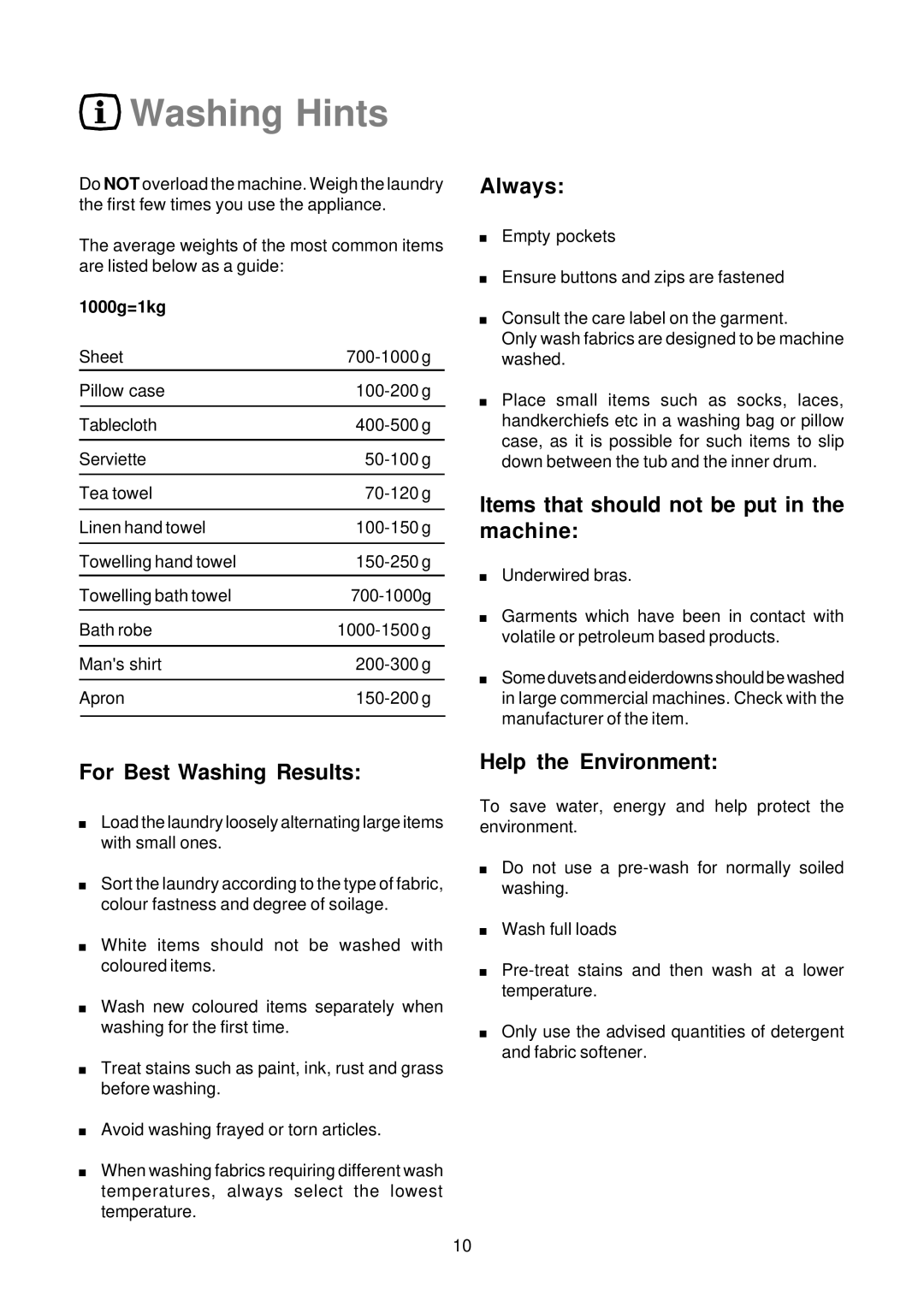
 Washing Hints
Washing Hints
Do NOT overload the machine. Weigh the laundry the first few times you use the appliance.
The average weights of the most common items are listed below as a guide:
1000g=1kg |
|
Sheet | |
|
|
Pillow case | |
|
|
Tablecloth | |
|
|
Serviette | |
|
|
Tea towel | |
|
|
Linen hand towel | |
|
|
Towelling hand towel | |
|
|
Towelling bath towel | |
|
|
Bath robe | |
|
|
Man's shirt | |
|
|
Apron | |
|
|
Always:
Empty pockets
Ensure buttons and zips are fastened
Consult the care label on the garment.
Only wash fabrics are designed to be machine washed.
Place small items such as socks, laces, handkerchiefs etc in a washing bag or pillow case, as it is possible for such items to slip down between the tub and the inner drum.
Items that should not be put in the machine:
Underwired bras.
Garments which have been in contact with volatile or petroleum based products.
Some duvets and eiderdowns should be washed in large commercial machines. Check with the manufacturer of the item.
For Best Washing Results:
Load the laundry loosely alternating large items with small ones.
Sort the laundry according to the type of fabric, colour fastness and degree of soilage.
White items should not be washed with coloured items.
Wash new coloured items separately when washing for the first time.
Treat stains such as paint, ink, rust and grass before washing.
Avoid washing frayed or torn articles.
When washing fabrics requiring different wash temperatures, always select the lowest temperature.
Help the Environment:
To save water, energy and help protect the environment.
Do not use a
Wash full loads
Only use the advised quantities of detergent and fabric softener.
10
